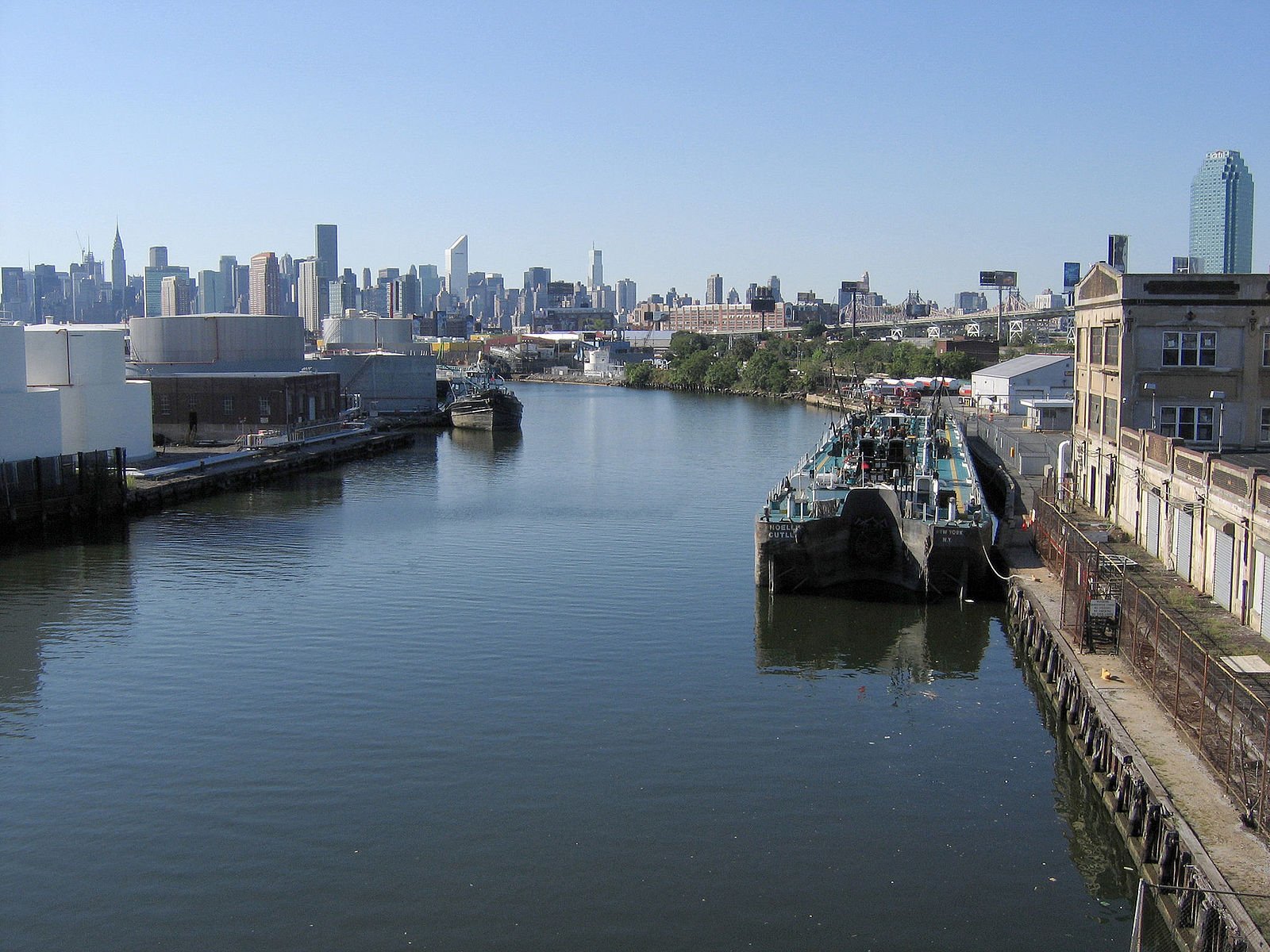Federal plans for Newtown Creek worry Long Island City locals
/Newtown Creek which runs from the East River through the Brooklyn neighborhoods of Greenpoint and the Queens neighborhoods around Long Island City. Photo by Postdlf/Wikimedia Commons
By Ryan Schwach
A number of local environmental groups have come out in opposition to a new plan aimed at shoring up the area along Newtown Creek.
As part of the massive NY and NJ Harbor & Tributaries Focus Area Feasibility Study, the Army Corp of Engineers is considering a possible storm surge gate in the area around Newtown Creek in Western Queens. But some local groups believe the project may cause adverse issues.
The storm surge gate would protect the low-lying communities on either side of Newtown Creek, which juts between Greenpoint in Brooklyn and Long Island City, from surge water from the East River.
However, some are worried that the gate could lock in Newtown Creek’s water, and overflow from the Newtown Creek Wastewater Treatment Plant and flood communities with dirty water.
“Our concerns are with the storm gate, and while we understand the purpose, the intended purpose is to block the East River from coming up the creek flooding the low lying areas along the creek including Hunters Point, Blissville and Laurel Hill all the way to the Queens-Brooklyn border in Ridgewood,” said Tom Mituzas, a member of the Billsville Civic Association and Community Board 2, as well as a member of the Newtown Creek Alliance and a lifelong resident of the area.
“Our concerns are the Combined Sewer Overflow outpouring into the creek – the water treatment plant outpouring into the creek and the 11-miles of shoreline runoff into the creek,” he added. “It didn't make much sense to us.”
The Army Corp’s plans are tentative, and subject to change. They plan to collect further community input before implementing the project.
“This feature and all the other features are preliminary and conceptual and subject to change in terms of the type of measures used, their location and the feature altogether,” said Bryce Wisemiller, USACE Project Manager.
“The current goal of these features are to feasibly address current and anticipated future coastal storm risk, particularly for areas of substantial unaddressed coastal storm risk such as the Newtown Creek area, that exist within the vast study area,” Wisemiller added.
Wisemiller acknowledges the locals' concerns and says that the input is needed for the plan, but doesn’t believe their worries are necessary.
“The storm surge gates would only be closed during the brief periods when storm surges occur,” he said. “During ambient times, tidal exchange into and out of Newtown Creek would continue to exist.”
A fix to any potential overflows in the creek could be mitigated by a pumping system.
“This has to be a pretty big pump,” said Mituzas, who was also worried about the power source for the pump should a storm knock it out.
“The interior drainage areas would be augmented with collection and/or pump systems as needed to address the inflow of waters into the creek to ensure that flooding behind the closed gates does not cause flood damages,” Wismiller said. “Generally speaking, though, the interior drainage system would be sized to accommodate relatively severe inflows that may occur coincident with a coastal storm surge when the storm surge gates would be closed.”
He added that the pumps would activate before any issue would actually happen to stop it early, and that there would be back up power sources.
Mituzas and his peers are also worried about ecology along the creek.
“I've read that storm surge barriers will negatively impact the ecology, so we're also concerned with that," he said. “We'd like to see that green – and maybe some federal green – come down the entire length of the creek, especially the Queens side…We want to see mitigation using natural things such as salt marshes, greenery.”
Overall, Mituzas says that USACE has been open to their questions and concerns about the project, which is still several years away.
“I am also grateful that they weren't offended by questions, nor were they argumentative with all questions,” he said.
As New York City continues to face extreme weather and the threat of more intense storms due to the effects of climate change, local officials hope to continue the efforts to make the coastal neighborhoods in Western Queens more resilient for the future.
“I’ve advocated for much overdue sewage and resiliency infrastructure for our waterfront community in our district, which is vulnerable during storms and extreme weather,” said Councilmember Julie Won, who represents the Queens side of the creek. “This includes state-of-the-art resilience like flip-up flood barriers for Newtown Creek. Queens deserves the same investments as Manhattan to keep our neighbors safe.”
“Climate justice and waterfront resiliency will continue to be a priority for us,” she added.
Congressmember Nydia Velazquez, who represents both sides of the creek, held a town hall In February on the project, and hopes the discourse continues.
"We in Congress have worked at the federal level to bolster coastal resiliency to address the local impact of rising sea-levels by authorizing the Army Corps of Engineers to study both this threat, and the threat of hurricane damage in coastal communities throughout the country,” she said in a statement to the Eagle. “At my town hall in February, constituents expressed serious concerns about the project's tentatively selected plan for flood protection. We need solutions that both protect our communities from flooding and don't compromise the water ecology, waterfront access or the ongoing effort to clean up Newtown Creek.
“Thankfully, the plan is not final, and the actual design has not begun. So, it is my hope that the Army Corps fully considers environmental and public concerns and ensures they are fully addressed in their development of a final plan," she added.




